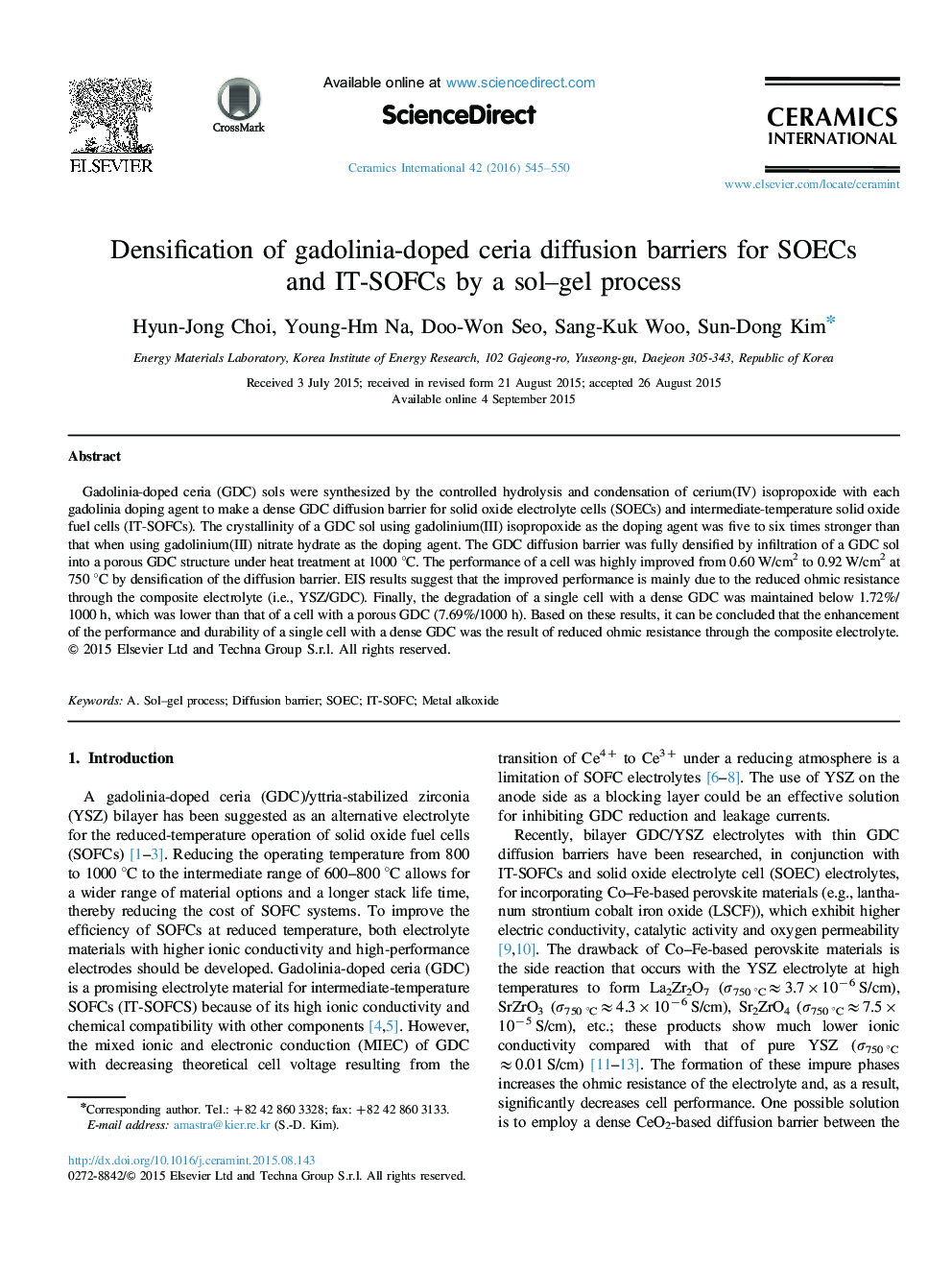| Article ID | Journal | Published Year | Pages | File Type |
|---|---|---|---|---|
| 1459461 | Ceramics International | 2016 | 6 Pages |
Gadolinia-doped ceria (GDC) sols were synthesized by the controlled hydrolysis and condensation of cerium(IV) isopropoxide with each gadolinia doping agent to make a dense GDC diffusion barrier for solid oxide electrolyte cells (SOECs) and intermediate-temperature solid oxide fuel cells (IT-SOFCs). The crystallinity of a GDC sol using gadolinium(III) isopropoxide as the doping agent was five to six times stronger than that when using gadolinium(III) nitrate hydrate as the doping agent. The GDC diffusion barrier was fully densified by infiltration of a GDC sol into a porous GDC structure under heat treatment at 1000 °C. The performance of a cell was highly improved from 0.60 W/cm2 to 0.92 W/cm2 at 750 °C by densification of the diffusion barrier. EIS results suggest that the improved performance is mainly due to the reduced ohmic resistance through the composite electrolyte (i.e., YSZ/GDC). Finally, the degradation of a single cell with a dense GDC was maintained below 1.72%/1000 h, which was lower than that of a cell with a porous GDC (7.69%/1000 h). Based on these results, it can be concluded that the enhancement of the performance and durability of a single cell with a dense GDC was the result of reduced ohmic resistance through the composite electrolyte.
